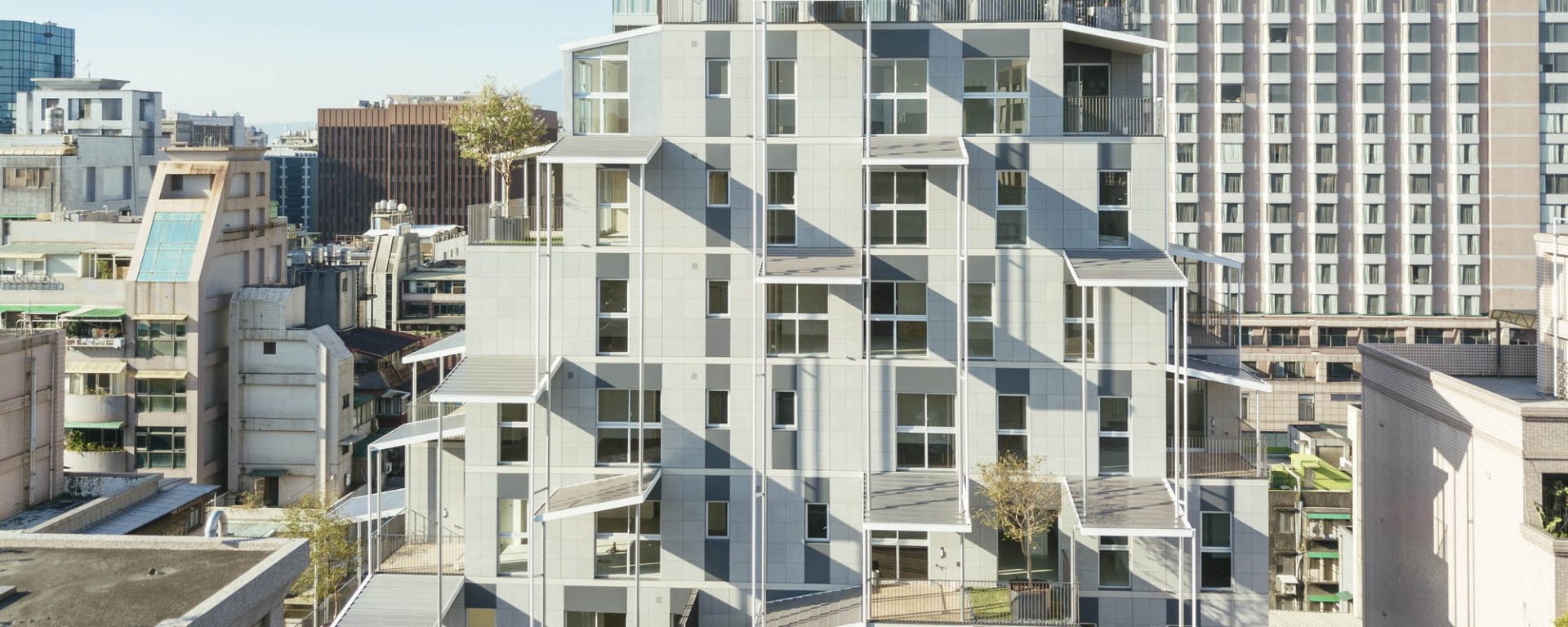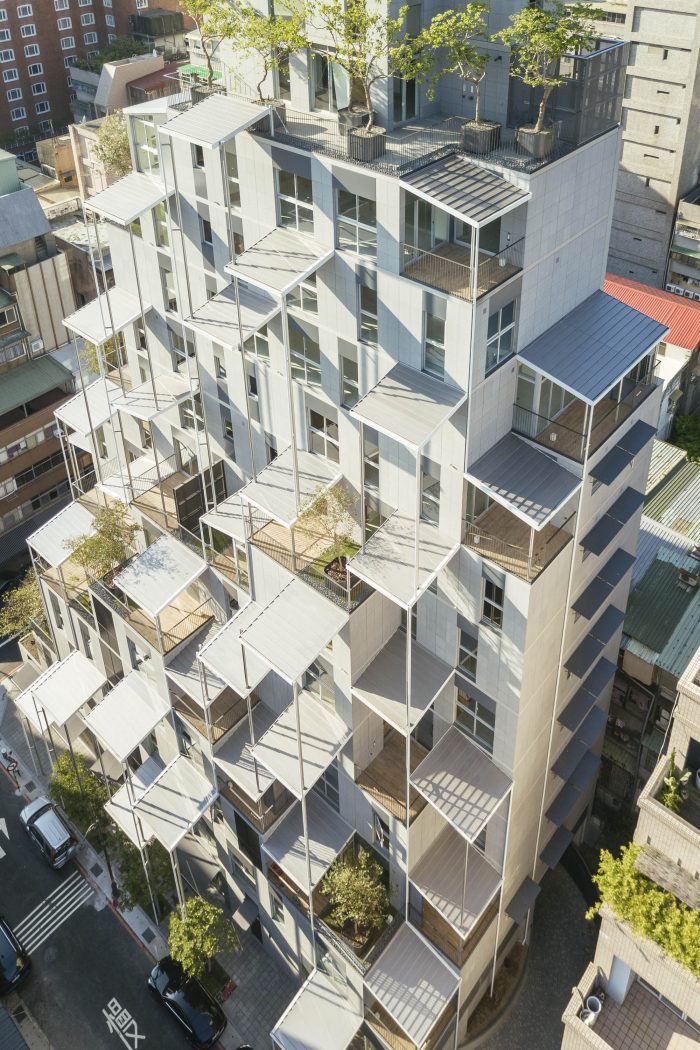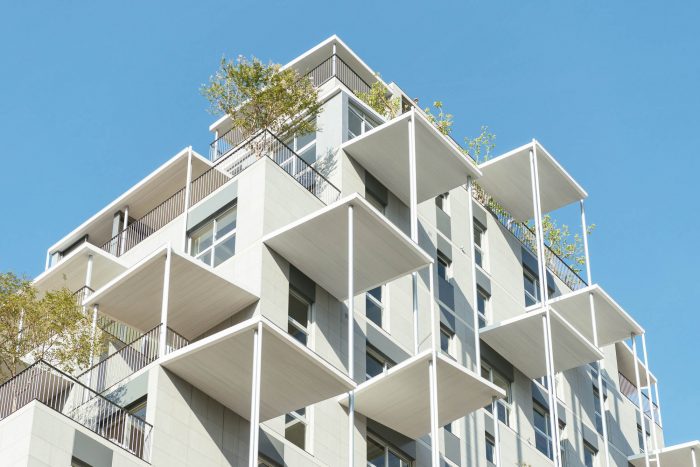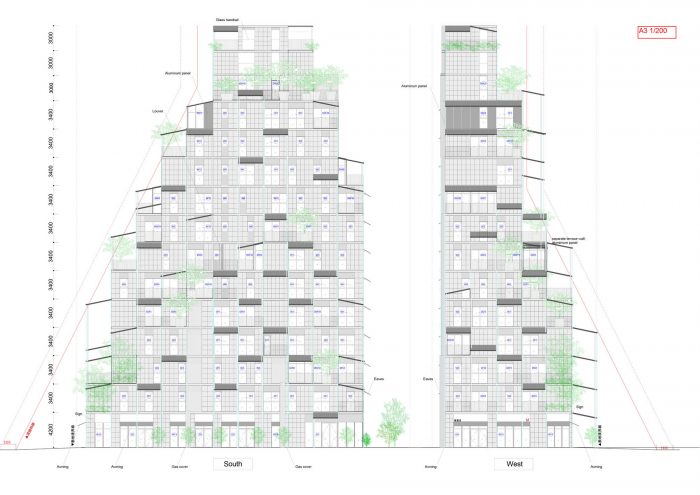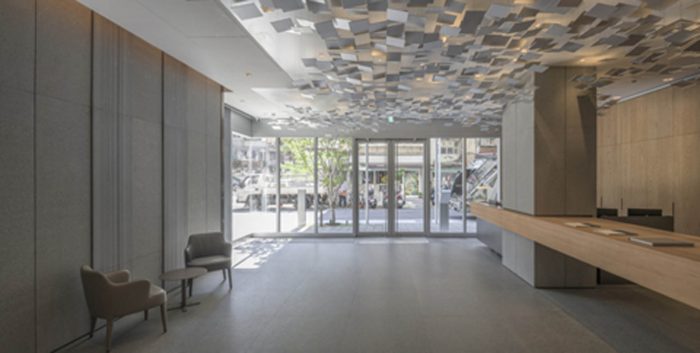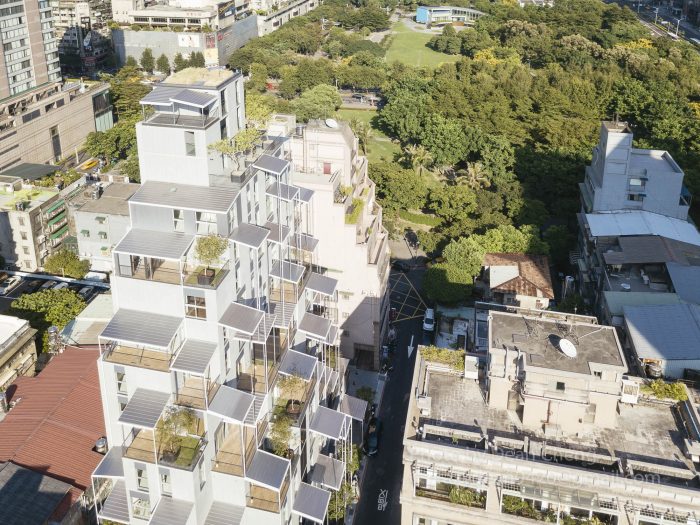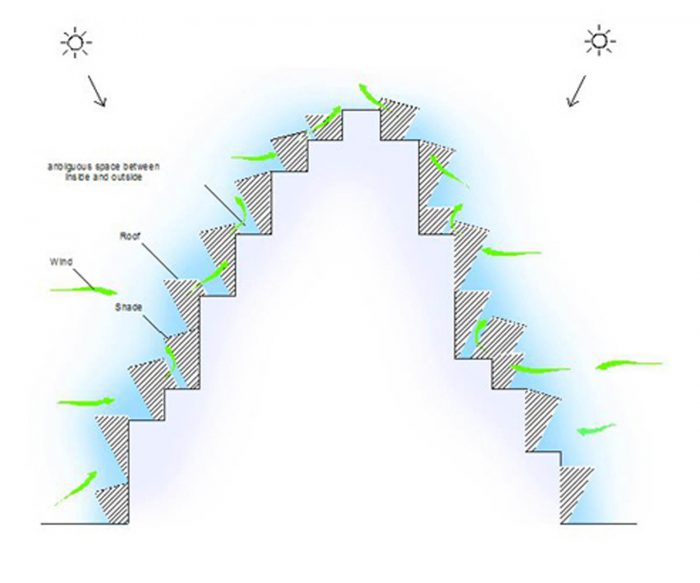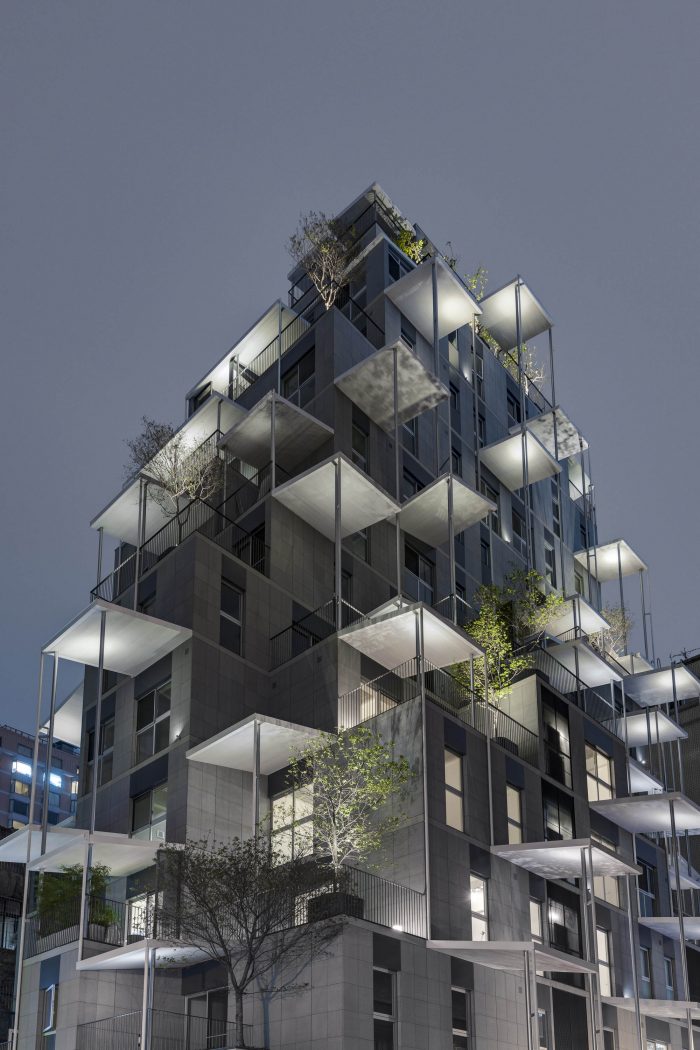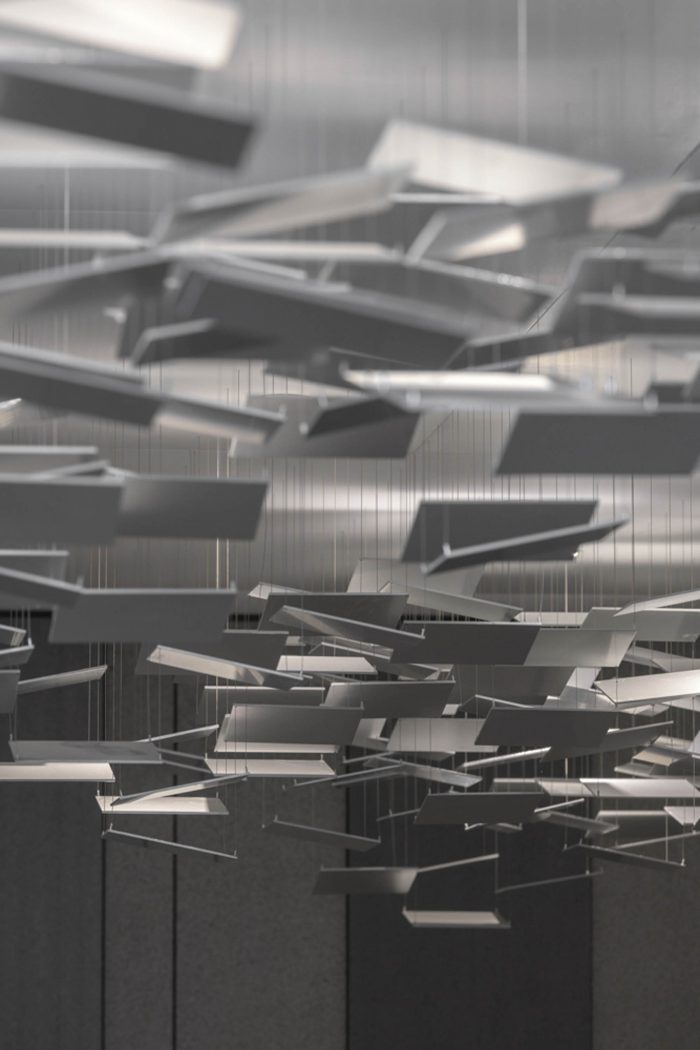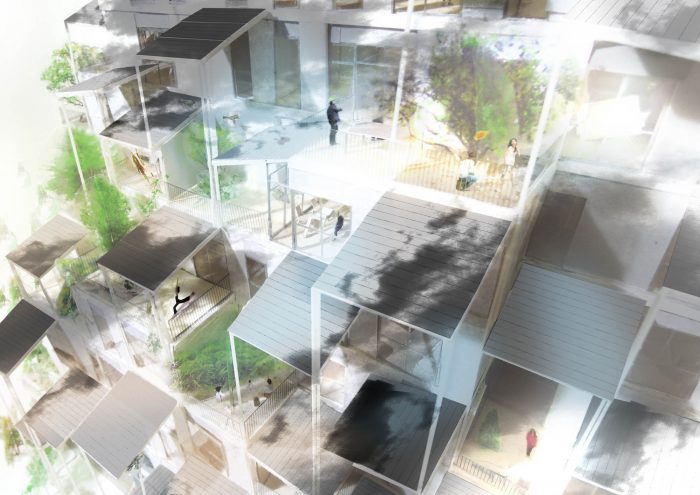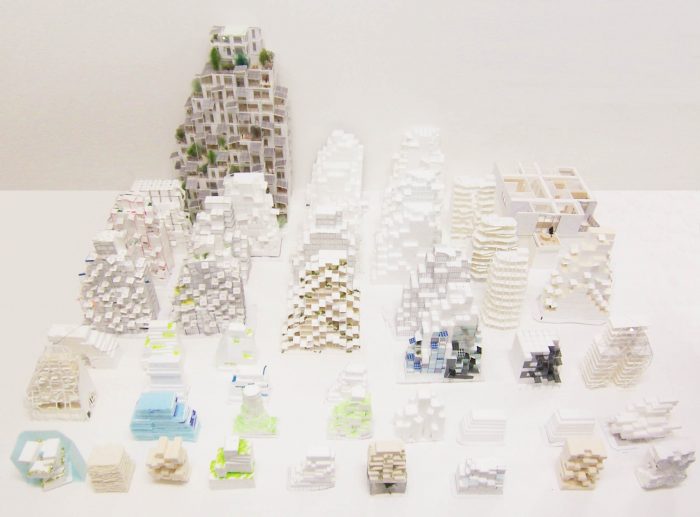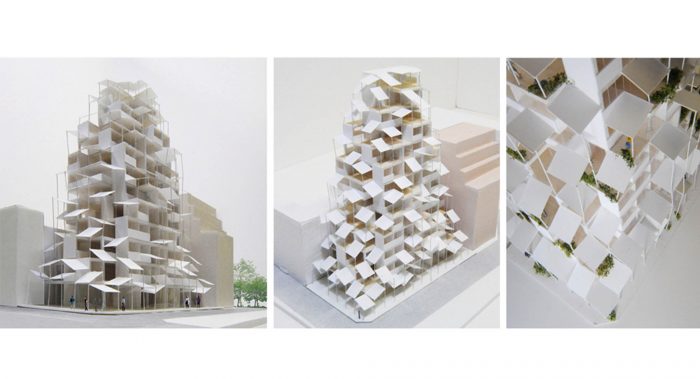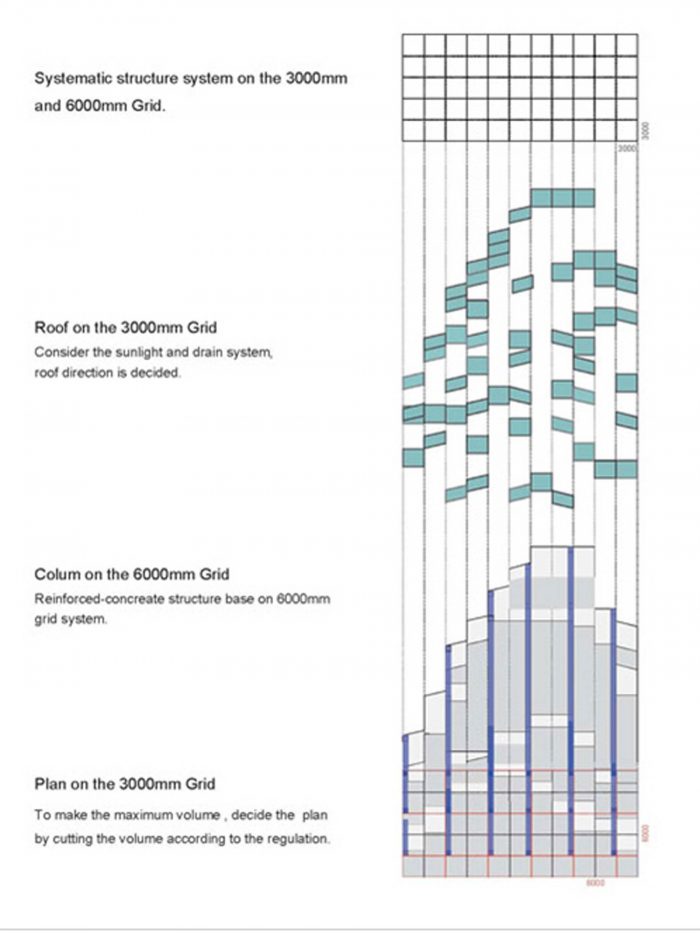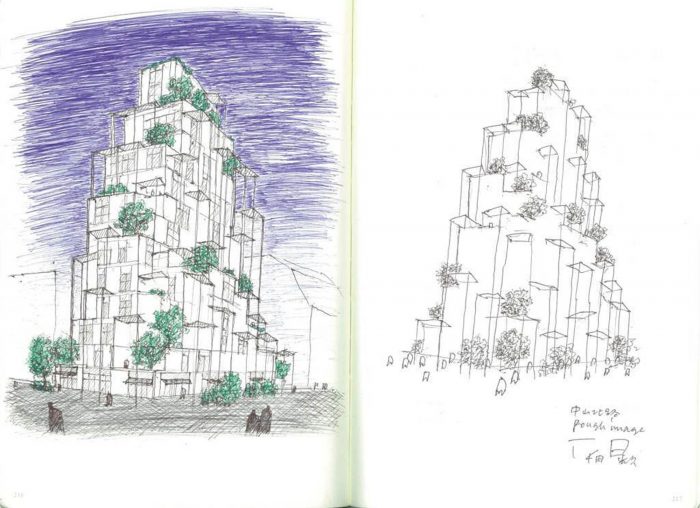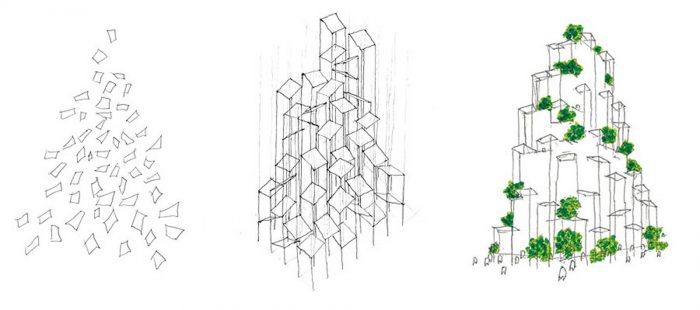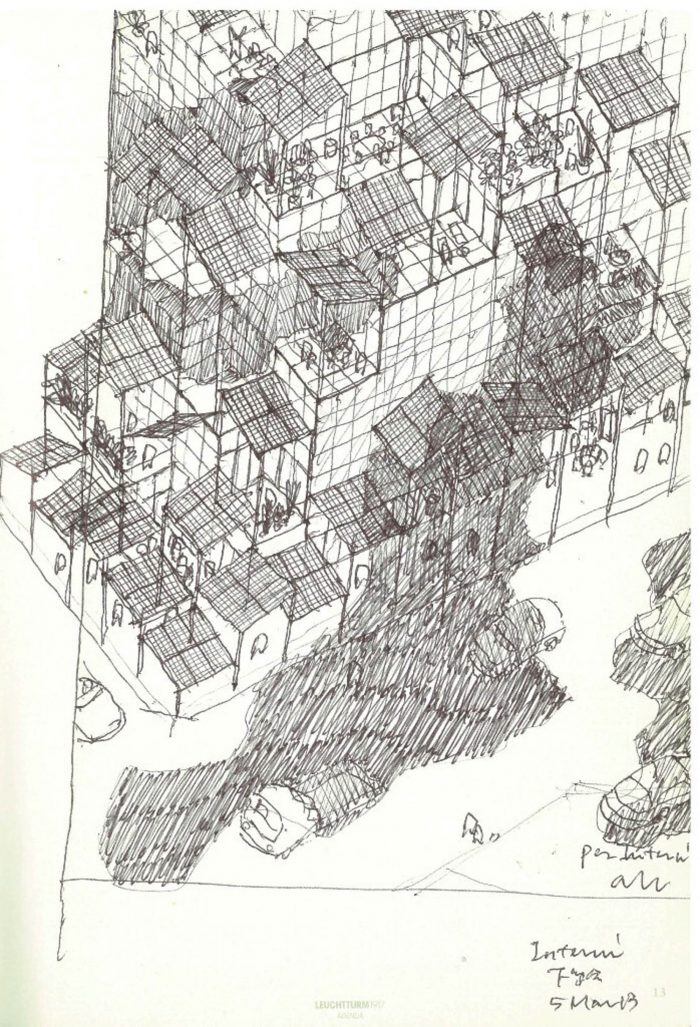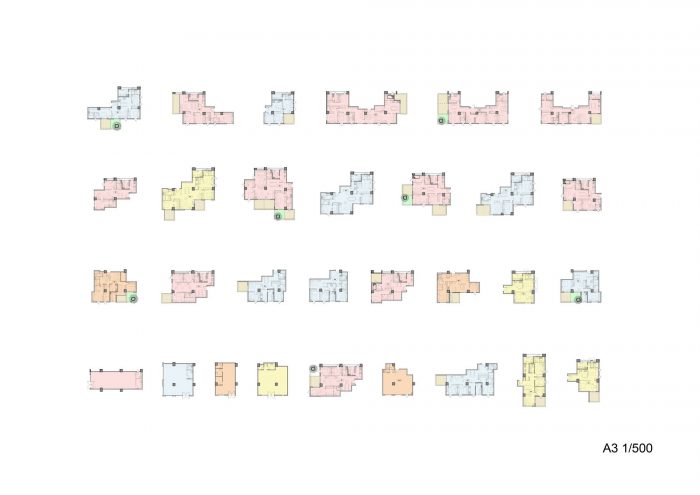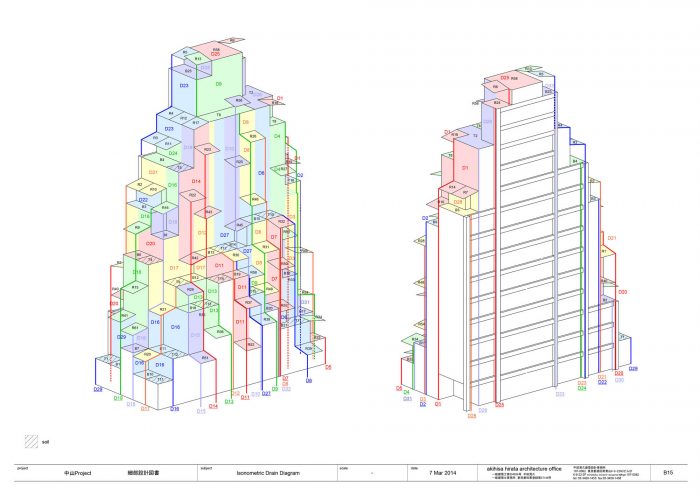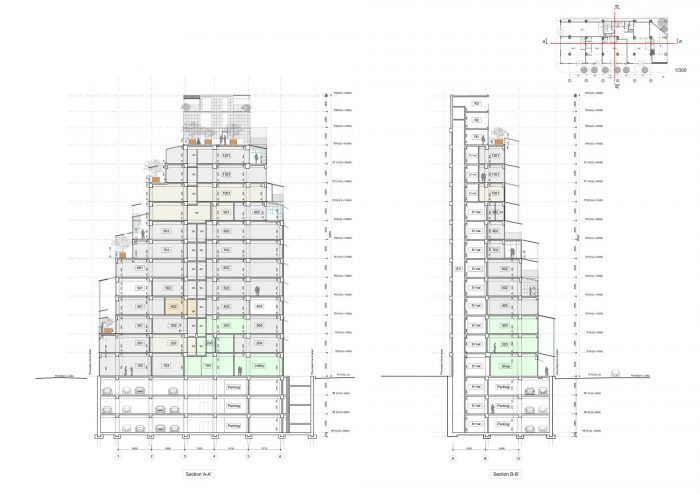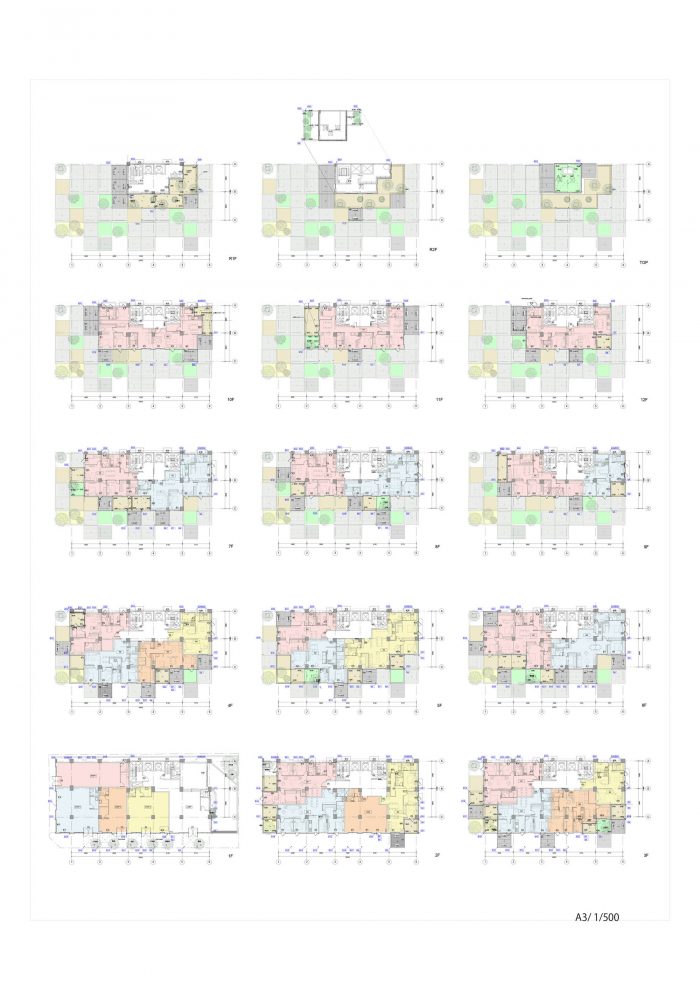这是一座建在台北市商业区的12层集体住宅。台湾的人们在生活中设计了各种与湿热气候相适应的中介区。你可以巧妙地利用整个城市道路延长线上的简单地方,你可以看到人们在享受用餐和谈话。是否可以考虑适合台湾人的公寓楼,他们创造了如此丰富的生活方式,但同时又有21世纪的新鲜感?
It is a 12-story collective house built in the shopping area of Taipei City. People in Taiwan have devised various intermediary areas that go well with hot and humid climates in their lives. You can skillfully exploit the simple places on the extension of the road throughout the city and you can see the people enjoying meals and conversation. Is it possible to consider apartment buildings suitable for Taiwanese people who have created such a rich lifestyle but at the same time have a freshness in the 21st century?
因此,我们选择的不是参考平面图上的塔楼,而是在对角线限制的同时,选择了后退的形状,这样所有的住宅都可以有一个大露台。阳台上有屋顶和树木,在建筑表面形成一个立体的、舒适的中间区域。
So we selected not the tower on the reference floor plans but the shape to set back while diagonally limiting the limits so that all the dwellings could have a large terrace. The terrace is covered with roofs and trees, creating a three-dimensional and comfortable intermediate area on the building surface.
6米的网格刚性RC结构被3米的网格屋顶框架系统所覆盖。主体结构为RC结构,屋顶为钢架结构的轻型结构。屋顶的坡度是恒定的,改变倾斜的方向就会有变化的表现。
The 6 m grid rigid RC structure is covered with a 3 m grid roof frame system. The structure of the main body is RC construction and the roof is a light structure of steel frame structure. The slope of the roof is constant, and changing the direction of the tilt makes a changeable expression.
梯度方向的分布使雨水流动的分支,或网络。屋顶、垂直天沟和细长的垂直杆使立面有了节奏感。换句话说,雨水的流动是这个建筑的外墙。流经城市的风会在整个不平坦的表面分散和柔和地传播,由于增强了露台的舒适度。它还最大限度地减少了 “建筑风 “的发生。
Distribution in gradient direction make branch of rainwater flow, or network. A roof, a vertical gutter and a thin vertical pole give a rhythm to the elevation. In other words, the flow of rainwater is made facade of this architecture. The wind flowing through the city will spread throughout the unevenness surface dispersal and softly, due to enhance the comfort of the terrace. It also minimizes the occurrence of “building wind”.
这是一个适合21世纪亚洲的高层建筑的原型,水和空气的流动进入了这里。
It is a prototype of a high-rise building suitable for Asia in the 21st century where the flow of water and air enters.
Architects: Akihisa Hirata
Area: 508 m²
Year: 2017
Photographs: Dean Cheng, akihisa hirata architecture office, PUAEN
Structural Engineer: Envision Engineering Consultants
General Contractor: PAUIYAN Archiland
Models:akihisa hirata architecture office
City:Xinyi District
Country:China

